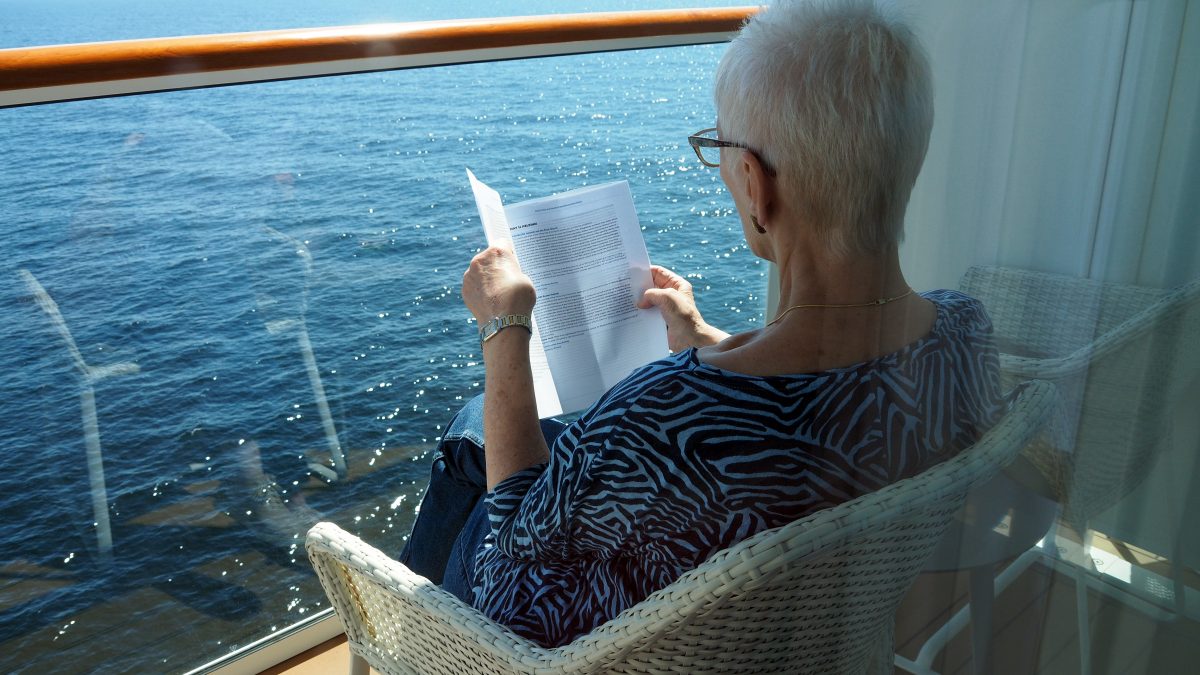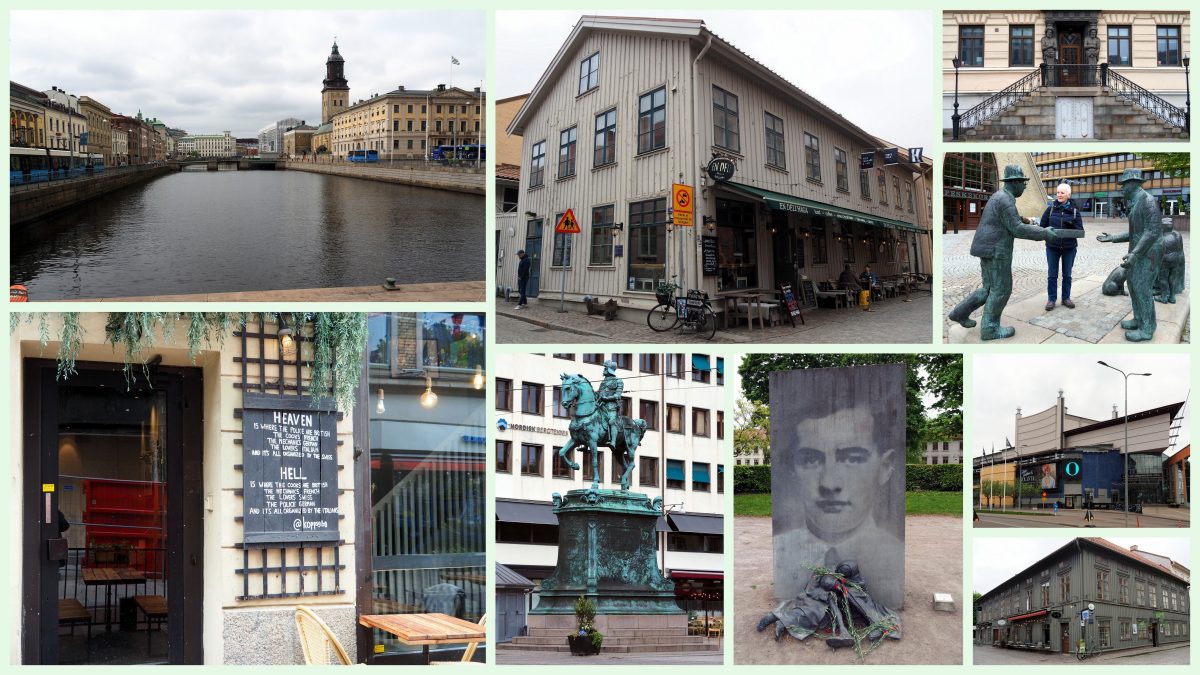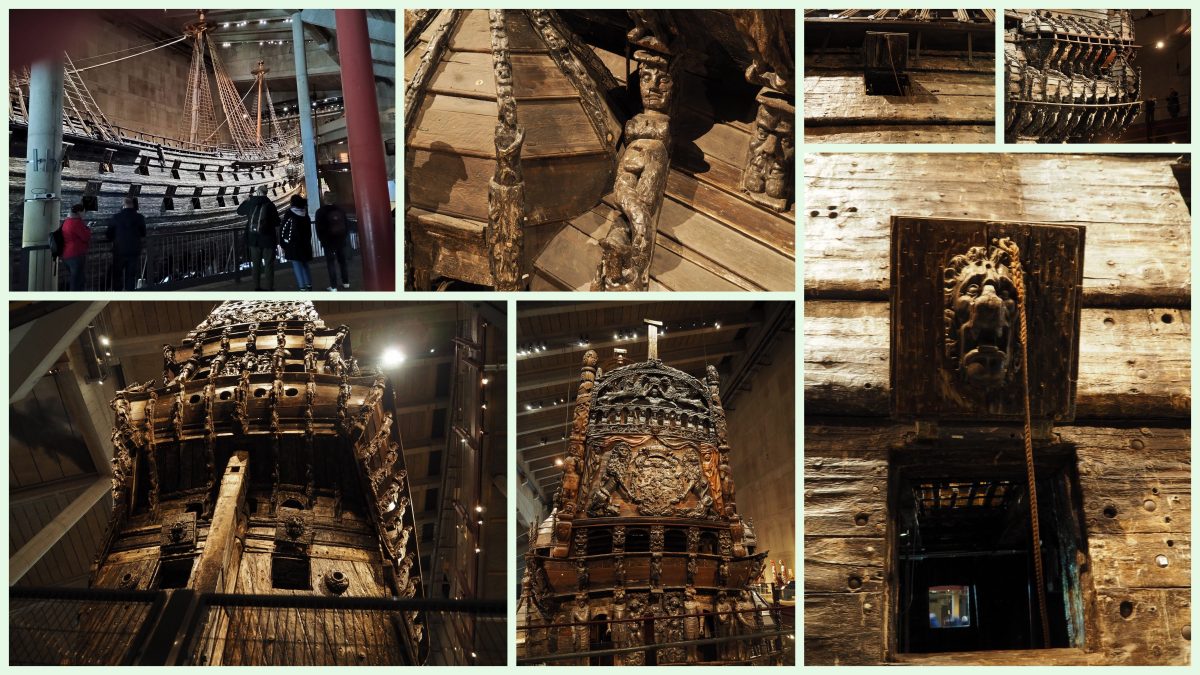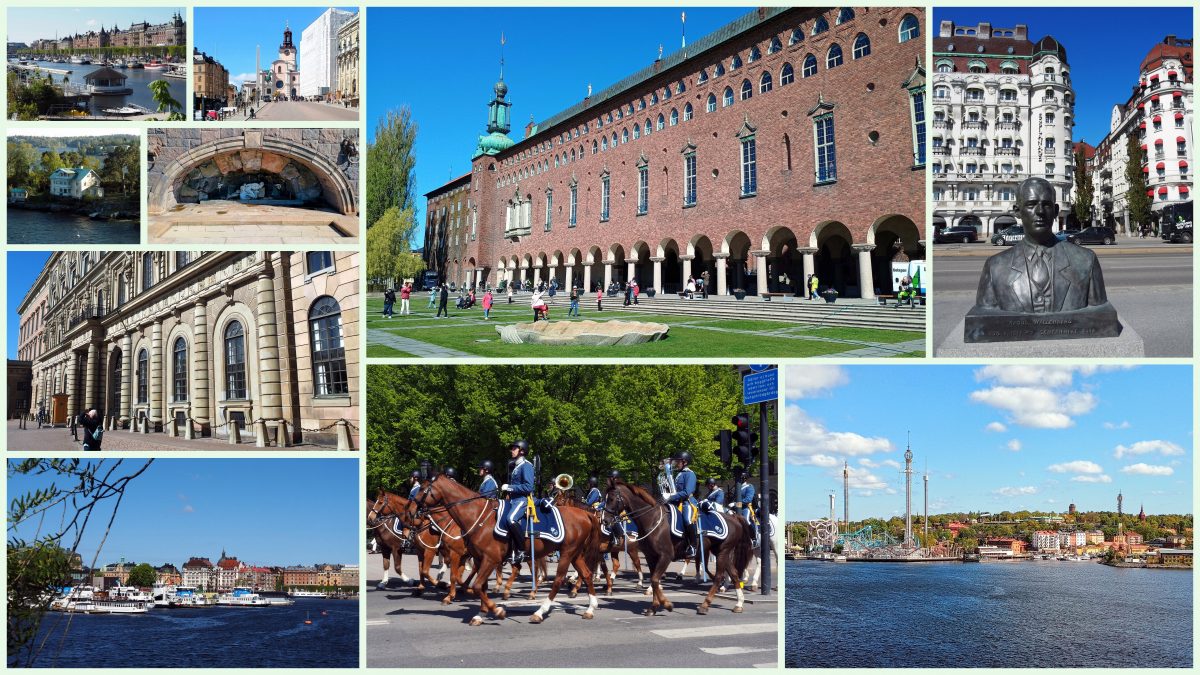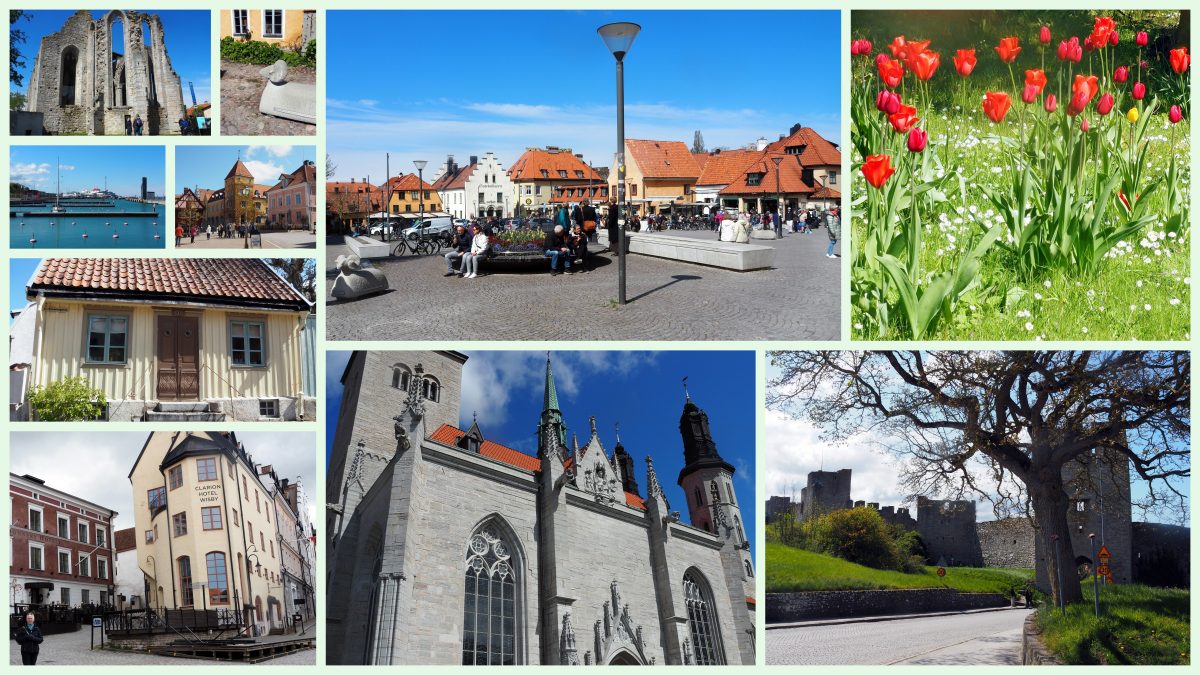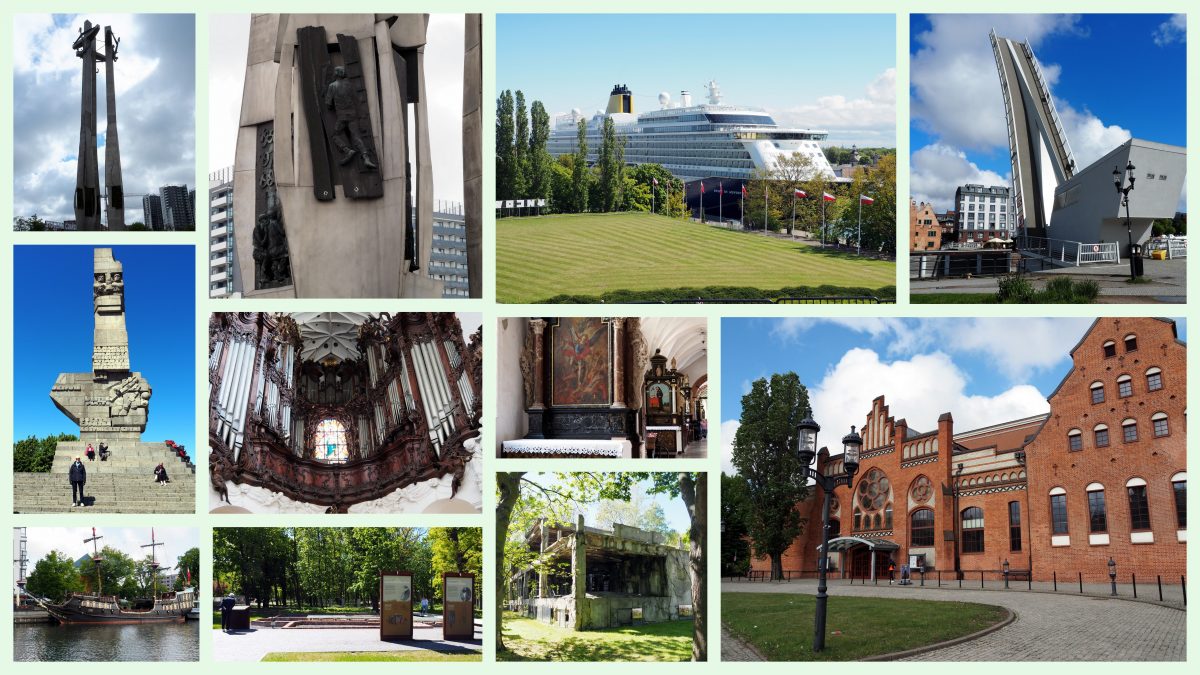A little late as we have been back just over two weeks but here nonetheless is a brief resume of our Saga Cruise (our second Saga after our first in 2023) to Scandinavia. This was on the Spirit of Adventure, thus ensuring we’ve now travelled on both the company ships. As specified, there are subtle differences but the overall layout is in fact exactly the same and means we were very quickly comfortable with our surroundings. Of the subtle changes, the one we noticed most keenly was the Nepalese specialty restaurant, which we both thought was excellent and an experience well worth repeating. We had learned from the previous ‘newbie’ experience and ate mainly in the grill to avoid the ‘perils’ of anytime dining, although on the occasions we did eat in the main dining room we had no trouble securing a table for two, so in fairness maybe they had made minor adjustments to the set-up (i.e. more tables for two!!)
As I have discovered this blog is read by absolutely no-one except one extremely close relative (and she’s not promising), this entry will largely consist of a summary of places visited, with just enough fascinating drivel to create the space for a collage or two. So here goes…
Gothenburg
After two days at sea the first calling point was the large city port of Gothenburg, where we took the shuttle bus into the city centre. We picked up a map at the quayside and decided to embark on the walking trail that was highlighted on the aforementioned map. We heard quite a few comments that implied the city was a boring non event and, to be honest, if all you did was take the shuttle in and have a brief potter around then that view is perfectly understandable. But Gothenburg is a working city and there needed to be a little legwork to see beyond the nondescript. Our walk took us past the Gothenburg Opera House, which is located right on the waterfront, where on the quay you can also find an array or armada of museum vessels. Then on to the old town area of Haga, which is a district dating from the late 19th century – I thought it was an interesting place, but those more familiar with the ‘pretty pretty’ countryside villages and lovely preserved towns of the UK may have been underwhelmed. The walk also took us past the The Fish Market Hall, which actually consists of the market and associated restaurants and actually looks rather like a small church. As it was a Sunday, the city was relatively quiet, so we could only guess at how busy these areas might normally be, but we thought a number would attract quite a local crowd, given the vibe in Haga and the promise of fresh fish on offer at the Fish Hall restaurants. There were also museums and cultural centres aplenty but we are old and decrepit and after we had traversed the walk we’d been on our feet for over three hours and were more than a little weary (that’s code for ‘knackered’) and back to the ship for a rest.
Helsinki
We have been to Helsinki before, but we both remember very little, other than it was raining cats and very large dogs and we were therefore prevented from venturing far from the Senate Square area. This time round, it stayed largely dry (save for the occasional, minor shower) so we could venture further afield. Off the shuttle bus (only a couple of ports allowed for direct walking access from the ship to town or city centre) we headed straight for the Old Market Hall, which showcased a wide variety of local delicacies and was actually opened in 1889 – the problem with a cruise however is you very rarely arrive at such establishments feeling a bit peckish and therefore rarely, if ever, sample such treats. And who wouldn’t be up for a little bit of whale meat!! We then ventured up the hill (thought we’d get it done early) to visit the Uspenski Cathedral, which apparently is the largest orthodox church in Northern and Western Europe and promised to feature beautiful icons and paintings. Hopefully the collage gives a little of its flavour. After a short break to review the map (I thought Swedish maps were tricky but they are a breeze in comparison to the Finnish version) we plotted a walk, via the Helsinki Cathedral and Senate Square, to the Temppeliaukio “Rock” Church that is, somewhat unsurprisingly, built into solid rock. Another Lutheran church (as is the Cathedral), it was designed by the Suomalainen brothers, has a fairly austere interior and was opened as recently as 1969. After revitalising ourself with a coffee and Finnish gateau (very nice, very filling and rather proving my earlier point) we returned to the shuttle, somewhat accidentally going through the Esplanade Park, which lays claim to be Finland’s most famous – very pleasant, but surely not!
Stockholm
Another return visit, but this time an overnighter. We both remember the old town area from the last visit so, on this occasion, we heeded the advice of the resident ‘guest speaker’ and decided to take the shuttle bus into the town and then walk over to the Vasa Museum. We were briefed on the background and were aware of how the warship Vasa had sunk on its maiden voyage in 1628. We also knew it had been salvaged some 333 years later but did not realise that it is the world’s best preserved 17th century ship, still magnificently adorned with hundreds of carved sculptures and 98% original. Having paid and entered the main hall, you are still not prepared for the sight of a virtually complete warship that is now (at the time of writing) nearly 400 years old. Simply magnificent.
The main hall contains the ship itself, and various exhibits related to the archaeological findings of the ships and early 17th-century Sweden. Vasa has been fitted with the lower sections of all three masts, a new bowsprit, winter rigging, and has had certain parts that were missing or heavily damaged replaced. The replacement parts have not been treated or painted and are therefore clearly visible against the original material that has been darkened after three centuries under water. The museum itself opened in 1990 and I think, for what it’s worth, that it is a magnificent achievement. Perhaps now is the time to mention the superb English (better than mine) spoken by the local residents – that was true everywhere we went and is clearly a message for we insular Brits I think. The following morning, we also took the scenic coach excursion that enabled us to see parts of Stockholm we would have otherwise failed to see, including the very impressive City Hall – together with some of the leading artists and craftsmen of the time, the architect Ragnar Östberg, created an architectural masterpiece that was inaugurated in 1923. It serves many functions but I conjecture that one of the primary purposes might simply be “showing off”. Lovely departure through the archipelago as well.
Visby
Finally, a port we could amble into from the ship. Took us about twenty minutes but a nice, even stroll. The Hanseatic city of Visby (on the island of Gotland) is arguably the best-preserved medieval city in Scandinavia, and, since 1995, it has been on the UNESCO World Heritage Site list. Among the most notable historical remains are the 3.4 km (2.1 mi) long town wall that encircles the town centre, and a number of church ruins. The decline as a Hanseatic city in the Late Middle Ages was the cause for many stone houses being preserved in their original medieval style. We wandered the town, examined the church ruins and the city proved very walkable; having said that, we did have to stop for a much needed coffee and repast to refuel along the way. Unusually, we deliberately chose to avoid all the museums on this cruise (apart from the Vasa Museum obviously), which is definitely a first for us and a clear sign of ageing – no raging against the dying of the light for us!
Gdańsk
Poland was the one deviation from Scandinavia (unless I’m corrected by the geographical mafia) and again we were again docked a significant distance from the city centre. There was a shuttle into the city but we also had a morning excursion booked and you didn’t really have time to do both. Again, kudos to the guide who spoke excellent English and was very informative. We had stop offs at a few locations, including the Polish Baltic F. Chopin Philharmonic, which was built as a power station with a neo-gothic façade. Gdańsk Shipyard was of course the birthplace of the Solidarity trade union movement and we had a brief stop at The Monument to the fallen Shipyard Workers of 1970. It was unveiled on 16 December 1980 near the entrance to what was then the Lenin Shipyard in Gdańsk, on the Baltic coast of northern Poland. It commemorates the 42 or more people killed during the Coastal cities events in December 1970. It was created in the aftermath of the Gdańsk Agreement and is the first monument to the victims of communist oppression to be erected in a communist country. It was designed by: Bogdan Pietruszka, Wiesław Szyślak, Wojciech Mokwiński and Jacek Krenz. We didn’t get to see the ‘old town’ but as it was largely recreated after being bombed out of existence in WW2, we weren’t too disappointed. Interestingly, right next to where we were docked was The Westerplatte Monument. Also known as the Monument to the Defenders of the Coast it is a war memorial constructed between 1964–1966 to commemorate the Polish defenders of the Military Transit Depot in the Battle of Westerplatte, one of the first battles in Germany’s invasion of Poland, which marked the outbreak of World War II in Europe. We both enjoyed (not the right word) it and the surrounding area and thought it a moving tribute to those who lost their lives at the very start of the war.
Rønne
Another amble into town for this one. Ronne, on the island of Barholme, attracts visitors mainly from Denmark, Germany, Sweden and Poland with its cobbled streets, half-timbered houses and interesting museums – although you’d think a few more trips from Saga would soon up the UK visitor quotient. It was a pleasant enough town to just amble around and we visited the Lutheran Evangelical Church of Skt. Nicolai; there had been a church on the same spot for more than 700 years but the present building I think was mainly 15th century. It was completely refurbished and enlarged in 1918. The Ronne Lighthouse, a slender white-painted octagonal tower in cast iron, stands on the waterfront not far from the church. Constructed in 1880, it was decommissioned in 1989. Other than that, there are a few ‘older’ (19th century) buildings, including the Merchant warehouse and the Ronne Theatre, housed in a half-timbered yellow and brown painted house with a red tiled roof. The building, dating from 1783, was expanded into a theatre in 1823, making it Denmark’s oldest provincial theatre still in active use. It only has a capacity of 302 but manages audiences of around 26,000 per annum. Perfectly pleasant, but not interesting enough to warrant a visit to Barholme Museum 🙂 .
Copenhagen
Copenhagen was another of the panoramic sightseeing trips and it was probably worth the early start. Got to see the Rosenborg Castle. It was originally built as a country summerhouse in 1606 and is an example of Christian IV’s many architectural projects. It was built in the Dutch Renaissance style, typical of Danish buildings during this period, and has been expanded several times, finally evolving into its present condition by the year 1624. The castle gardens are worth a wander around and it is indeed the country’s oldest royal garden. It was embellished in the Renaissance style by Christian IV shortly before the construction of the main castle. Today, the gardens are a popular retreat for the people of Copenhagen, and attract an estimated 2.5 million visitors every year. Next to the castle are barracks where the Royal Life Guards is garrisoned. We had a short stop at St. Alban’s Church (the English Church), which was built from 1885 to 1887 for the benefit of the growing English congregation in the city. Designed by Arthur Blomfield as a traditional English parish church in the Gothic Revival style, it is in a peaceful park setting in the northern part of the city centre, next to the Gefion Fountain. If you wondered about the name, apparently it is dedicated to Saint Alban, the first martyr of Great Britain. Final stop was to see the Little Mermaid Statue, which we have of course seen before. Like before, still thought it was underwhelming and more trouble than its worth, but the crowds there to see it provide plenty of evidence to the contrary – or were they just a gullible lot? Anyway, the Tivoli Gardens (which we drove past) were my highlight last time we were here but on this occasion we didn’t get the opportunity to get inside what is both an amusement park and pleasure garden. The park opened on 15 August 1843 and is the third-oldest operating amusement park in the world. And lots and lots of fun I remember.
Skagen
Our final destination was to Skagen, northernmost town in Denmark, on the east coast of the Skagen Odde peninsula in the far north of Jutland. The Port of Skagen is Denmark’s main fishing port and it also has a thriving tourist industry, attracting 2 million people annually. There was a marked path (a painted blue line) out of the port, with good reason as the fishing industry has led to a selection of side streets and avenues within the port environment. We thought Skagen was perfect walking territory for two old codgers like us and we thought the ‘main street was delightful. The Skagen painters, you’ll certainly not be surprised to learn, were based here. We visited the Skagen Church, built in 1841 to the design of Christian Frederik Hansen. Incidentally, on the way back to the ship, we found our way into the Svenska Sjömanskyrkan, a Lutheran church close to the harbour. This proved to be a lovely little church that was dedicated to fishermen. It is a relatively simple church but is painted with some delightful murals depicting fisherman and their activities. The Skagen main street was also as close as we got to splashing out on this holiday but we both resisted and settled instead for a local patisserie and the best coffee of the whole trip, along with a very fine pastry, the name of which has now eluded me.
We enjoyed the whole trip, the ship was like a home from home (no doubt enhanced by its familiarity) and the door to door service certainly takes all the grief and stress out of getting to and from the port.

